The eastern hognose snake is a harmless medium-sized snake found in the Central and Eastern United States. The snake has a hog-shaped snout and a broad and flat neck. Its coloration and patterns can be extremely variable ranging from completely black specimen to colorfully patterned individuals.
Description
The hognose snake got its common name from its hog-shaped Scutum rostrale (the nasal scute). This modification allows the snake to better dig into loose soil. Another characteristic to identify an eastern hognose snake is their broad and flat neck that looks almost cobra-like. The coloration of the snake varies greatly between individual specimens and populations. It can have strong colors and patterns with yellow, orange or red and black or dark grey or brown patterns on its back. Other individuals are mostly brown colored with darker brown patterns, while some are grey and black patterned. Some specimen can also be completely patternless and uniformely brown or black.
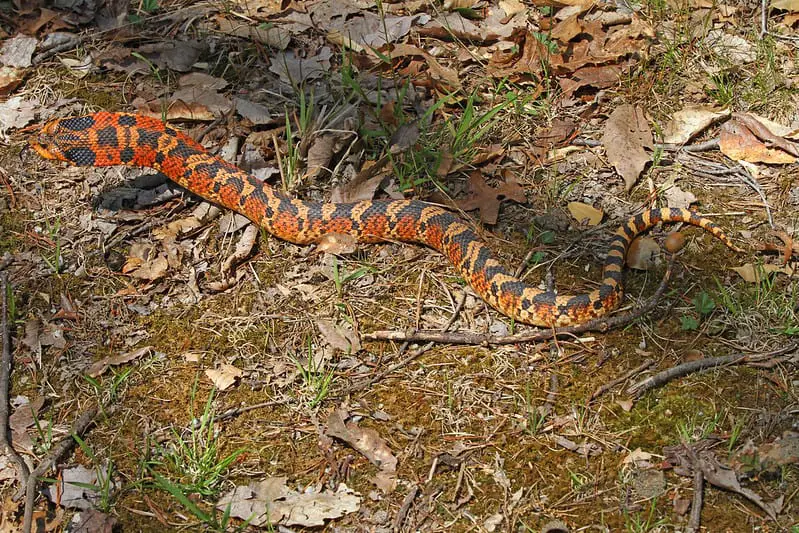
The snake has adapted its appearance as well as some behavior to venomous snakes such as rattlesnakes. This so-called Batesian mimickry scares off potential predators who aren’t willing to take on a venomous rattlesnake. Due to its size, the snake can be confused with the pygmy rattlesnake (Sistrurus miliarus) as well as some other smaller rattlesnake species or young rattlesnakes.
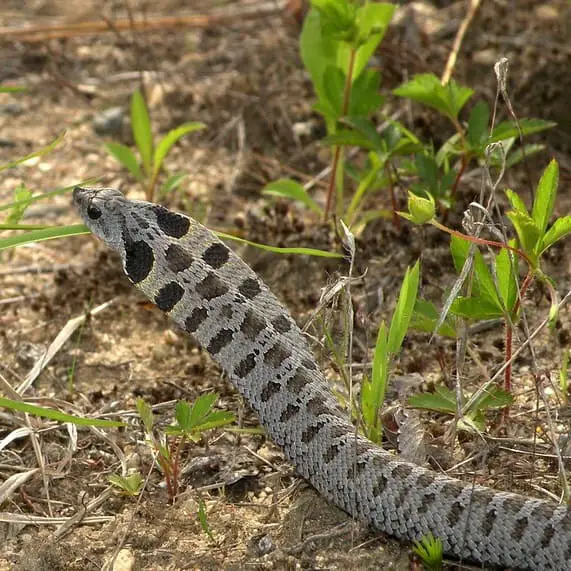
The belly of the eastern hognose snake is usually light-colored, often white or purpleish or blueish.
Size
Eastern hog-nosed snakes reach an average length of 20-30 inches (50-75 cm). This speacies shows a a distinct sexual dimorphism. In this case females are much larger and considerably heavier than males. The largest ever recorded specimen was a female with a total length of 46 inches (116 cm).
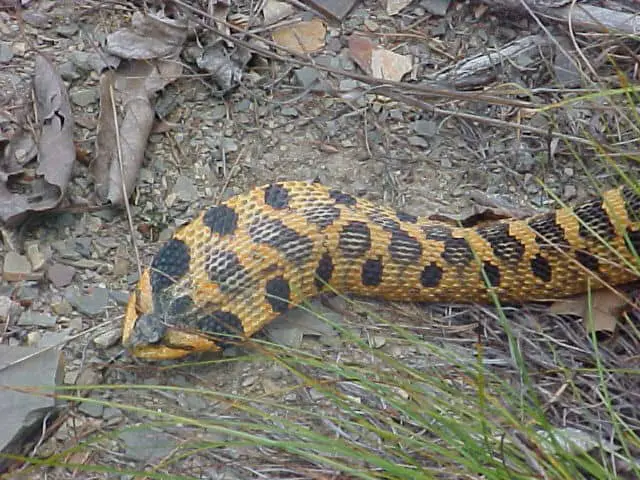
Hunting Behavior and Habitat
The eastern hog-nose snake feeds almost exclusively on amphibians, especially toads. It is even immune to the venom on the skin of some toads and can digest them without any effects.
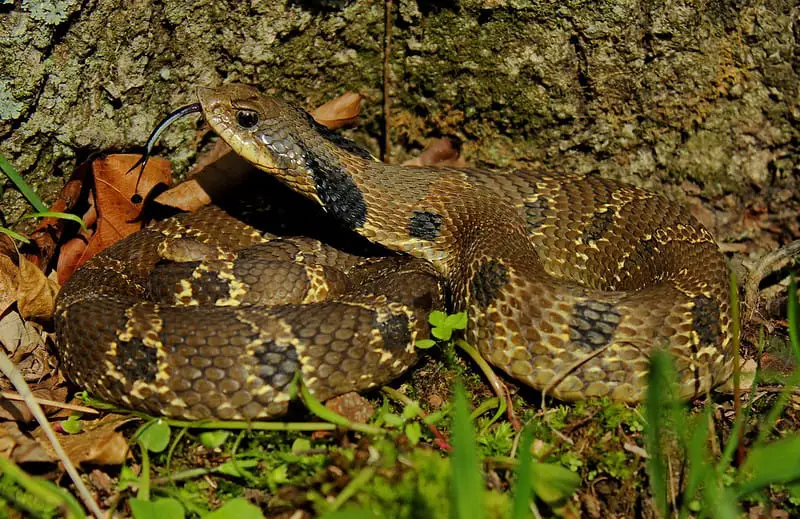
Bite and Defense
Hognose snakes have a mildly venomous saliva. However, due to the almost non-existing effects on humans, this species is still considered a nonvenomous snake. No systemic effects of a hognose snake bite have ever been recorded. The snake would have to keep “massaging” their saliva into under the skin for an extended period of time for the venom to show any effects on humans. Allergic persons should still steer clear of the snake to prevent an unlikely, but possible reaction to the mild venom. These reactions are usually limited to local swelling and itching.
When an eastern hognose snake feels threatened, it raises its head off the ground and flattens its head even more. This gives the snake the look of a cobra or a rattlesnake ready to strike. However, when they strike larger attackers, they are keeping their mouth closed and basically punch their attacker. The nonvenomous western gopher snake and the close relative, the western hognose snake show a similar behavior. If the attacker still won’t back up after this, it will turn on its back and release a foul smelling, milky white liquid from its anal vent. In addition, it can bleed from the mouth by intentionally rupturing smaller blood vessels. By feigning dead, it confuses predators and presents itself as inedible.
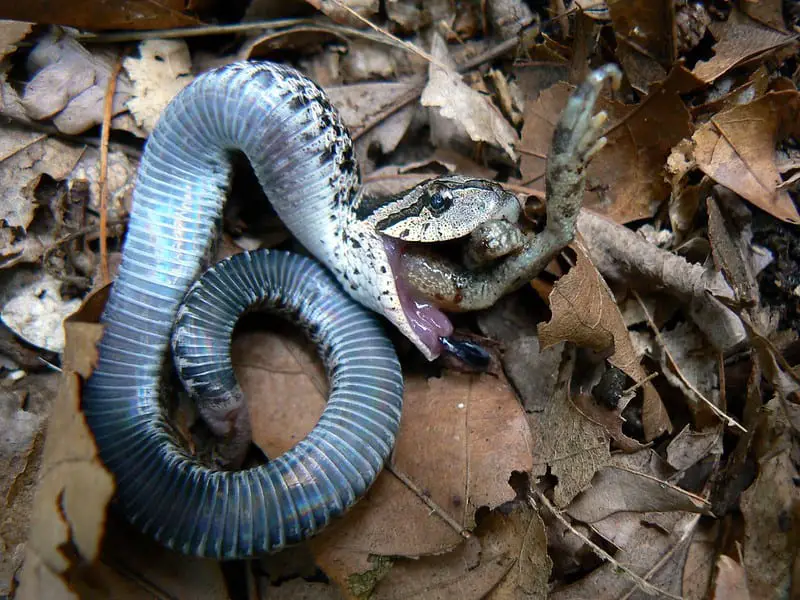
Eastern hognose snake range in the USA
The eastern hognose snake can be found in eastern Canada and in the United States in Texas, Oklahoma, Louisiana, Arkansas, Mississippi, Alabama, Georgia, Florida, South Carolina, North Carolina, Tennessee, Kansas, Missouri, Illinois, Indiana, Kentucky, Ohio, West Virginia, Virginia, Pennsylvania, New Jersey, Maryland, Delaware, Massachusetts, Rhode Island, southeastern New York, Connecticut, New Hampshire, eastern Nebraska, Michigan, Wisconsin, Minnesota and southeastern South Dakota.
Other Common Names
Other common names of the eastern hognose snake include various different spellings of its standard common name:eastern hog-nose snake, hog-nosed snake and hognosed snake. In addition, the snake is sometimes referred to as one of the following: spreading adder, spread’em outer, bastard rattlesnake, blowing snake, calico snake and many others.
Scientific classification of Heterodon platirhinos
- Kingdom: Animalia
- Phylum: Chordata
- Class: Reptilia
- Order: Squamata
- Suborder: Serpentes
- Family: Colubridae
- Genus: Heterodon
- Species: Heterodon platirhinos